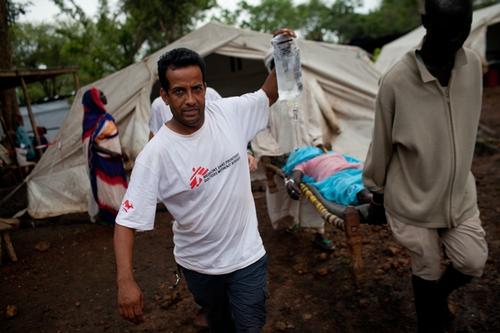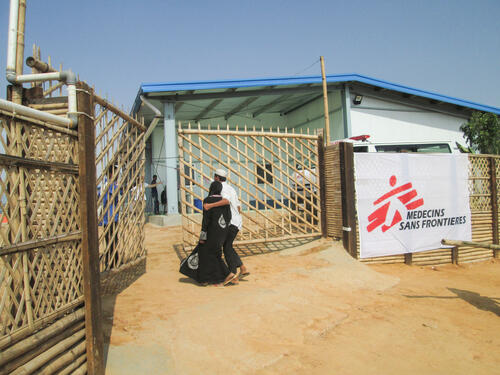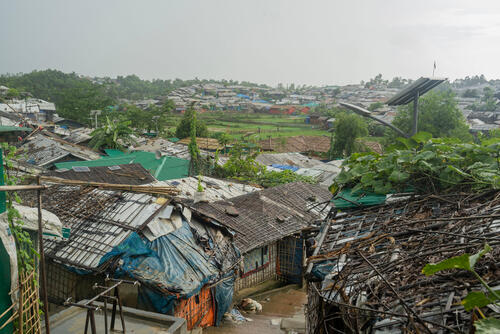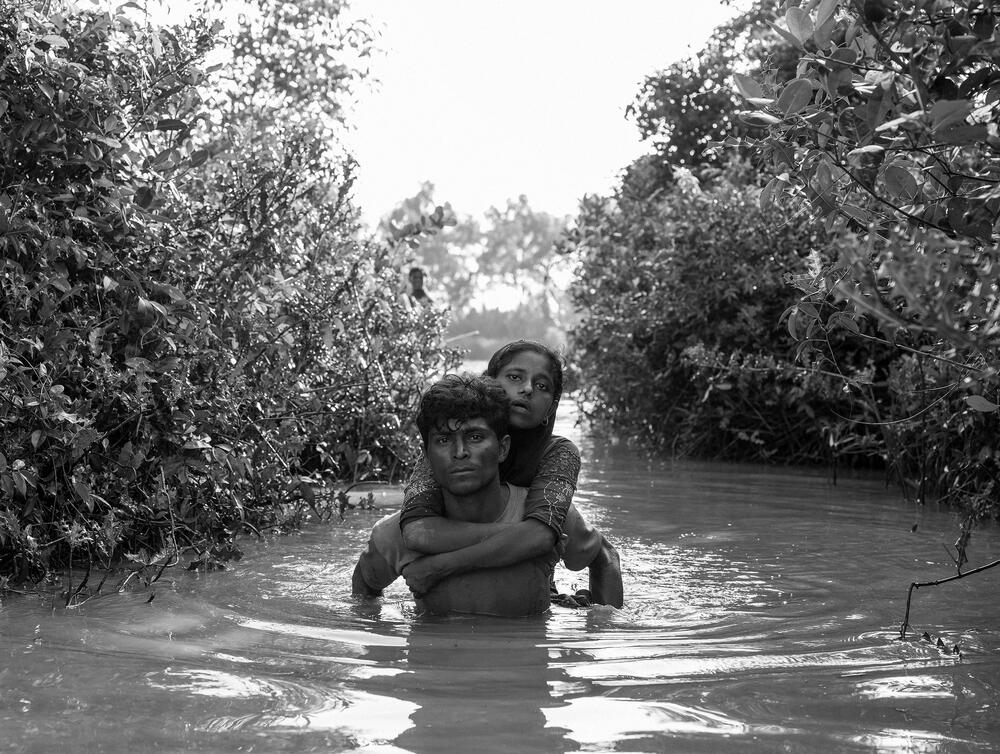Rohingya refugee crisis
On 25 August 2017, a massive exodus of 745,000 Rohingya began to flee Myanmar into Bangladesh. Now, more than 925,000 people are stranded in vast refugee camps.
In that first month, a concerted campaign of violence was unleashed by the Myanmar authorities against the country's Rohingya ethnic minority in Rakhine State. By the end of the year, more than 660,000 people had crossed the border into Bangladesh.
Médecins Sans Frontières / Doctors Without Borders (MSF) teams have been responding to the crisis from its first moments.
How you can help
Our teams can provide healthcare to persecuted people around the world thanks to your help
Who are the Rohingya people?
The Rohingya people are a stateless ethnic group who have lived for centuries in northeast Myanmar, also known as Burma.
They are one of the most persecuted minorities in the world. Due to ongoing violence and persecution, hundreds of thousands of Rohingya have fled to neighbouring countries either by land or boat over the course of many decades.
The Rohingya in Bangladesh
Since 25 August 2017, over 745,000 Rohingya refugees have fled from Myanmar into Bangladesh. Their arrival comes on top of hundreds of thousands of other Rohingya who arrived in previous years and were already living in difficult conditions.
Those arriving in Bangladesh shared stories with MSF about their villages being systematically raided and burnt by the Myanmar military. Mob groups also targeted the Rohingya, with reports of women and children being raped and killed.
The resulting mass displacement of people in this short period of time is one of the largest of its kind in recent history.
Currently, there are around 925,000 Rohingya refugees living in Bangladesh – more than the entire population of Amsterdam, and twice that of the entire country of Malta.
The vast majority of people now live in camps in the Cox's Bazar district, on the border with Myanmar.
This includes the Kutupalong-Balukhali 'mega camp' – known as the largest refugee camp in the world – which hosts more than 626,000 people. A further 100,000 people live in Nayapara camp, to the south.
What is MSF doing to help the Rohingya people?
More than 2,000 MSF staff – the majority of whom are Bangladeshi nationals – are working in 10 health posts, primary health centres and inpatient facilities in the Cox's Bazar region of Bangladesh. More than 1.4 million patients have been treated at MSF facilities since 25 August 2017.
Since 1985, MSF has been present in Bangladesh in both the capital Dhaka and Cox’s Bazar, the coastal border town with Myanmar.
We massively increased our capacity to respond in the area following the massive influx of Rohingya into the country and launched large emergency responses in the Cox's Bazar area.
In the first six months of the crisis alone, we treated more than 350,000 patients.
The main health issues we are now seeing in Bangladesh are respiratory infections, diarrhoeal diseases, skin diseases – all related to poor living conditions. Other activity includes:
- Providing maternity care and mental healthcare, including for survivors of sexual and gender-based violence
- Delivering healthcare to four remote Rohingya displacement camps in central Rakhine in Myanmar through outreach work and mobile clinics
- Providing medical and mental health consultations to Rohingya people in Malaysia, some of whom have been victims of human trafficking

Help us prepare for the next emergency
2,800,000
EMERGENCY, OUTPATIENT, AND MOBILE CLINIC CONSULTATIONS FROM AUGUST 2017 TO JULY 2022
32,000
MENTAL HEALTH CONSULTATIONS HELD FROM AUGUST 2017 TO JUNE 2019
2,015
MSF STAFF IN BANGLADESH IN 2023
Violence and persecution in Rakhine State
Surveys conducted by MSF refugee camps in Bangladesh estimate that at least 9,000 Rohingya died in Myanmar between 25 August and 24 September 2017. At least 6,500 of these (by the most conservative estimations) are thought to have been killed, including at least 730 children below the age of five.
However, this is not a one-off incident. Hundreds of thousands of Rohingya have been fleeing to neighbouring countries by land and sea over the course of many decades. In October 2016, a previous outbreak of violence forced 60,000 Rohingya to flee to Bangladesh.
International humanitarian organisations are still blocked from accessing and operating in northern Rakhine. We are urging the Myanmar government for access to Rakhine State to ensure the impartial delivery of aid to those in need.
Find out more about the Rohingya crisis on Everyday Emergency, the MSF podcast
Rohingya refugee crisis: news and stories



Help us care for people seeking safety
Our independent funding from private donors like you allows us to work with people like the Rohingya. It means we can provide medical care where the need is greatest, with no strings attached.
